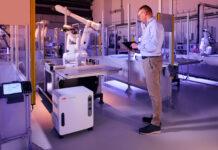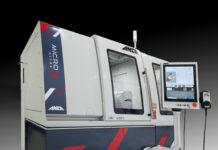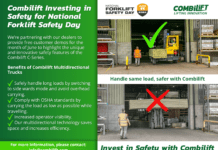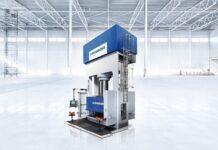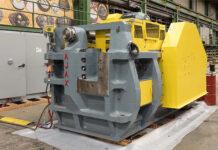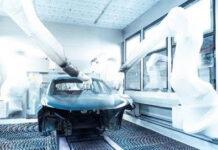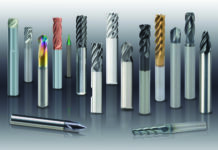In Cheraw, South Carolina, two Schaeffler Group USA factories have been producing high-precision engine components and industrial products for North American markets for more than 50 years. While Schaeffler’s production facilities are already highly automated, Marty Parker, Director of Special Machinery, Americas, is always looking for ways to make production processes more autonomous and less dependent on manual labor. But Parker also notes that, “A lot of the low-hanging fruit’s been wiped out over the years, so now it’s a little more complicated.”
Schaeffler’s special machinery group, called Sondermaschinenbau (SMB), supports the company’s global production facilities with special equipment and projects to extend automation and improve labor utilization and productivity.
One of the complex holdouts in terms of automation was picking complex-geometry components jumbled together in bins, then placing the components in precise orientation on an automated conveyor for assembly. SMB turned to the Universal Robots (UR) ActiNav machine tending kit to handle this challenging task that couldn’t be cost-effectively automated—until now. The end result is improved labor utilization and productivity on previously manual lines.
Production challenge: Increase machine output and improve efficiency on assembly line
Within the Cheraw facility, 24/7 manufacturing lines produce a variable cam timer (VCT) to improve performance and reduce emissions in internal combustion engines. Four operators used to oversee and feed these lines, ensuring that the complex geometries of the component were accurately oriented for the next process. Because these lines are far from other equipment, workers couldn’t easily be utilized in other areas, and if they left the line for breaks or other reasons, production halted.
Like many manufacturers, Schaeffler found it difficult to hire and retain employees for these repetitive manufacturing operations. Mike Reed, VCT Production Leader explains that, “This project came about because we needed to increase our output on the machine and somehow create more of an efficiency on the line. The eight hours a day of having to do that one job can be very cumbersome and very boring to say the least.” By automating the repetitive process, Schaeffler can reduce downtime and lost production and is able to reallocate an operator to other processes.
Quickly Accomplishes What Other Automated Bin Picking Systems Could Not
Automating the machine loading on the VCT line initially proved challenging as explained by Bruno Waldmann, SMB Mechanical Design Group Leader. The component is produced by an outside supplier and delivered in bulk. Having those parts delivered in oriented trays for traditional automated machine tending would have added too much cost to the components, plus the additional costs of returning empty trays to offshore vendors to be restocked.
Waldmann and his team had tried multiple times over several years to automate this process, with no success. They discovered ActiNav at a trade show and quickly reached out to CIMTEC Automation, a Universal Robots distributor. Within days, ActiNav was demonstrating successful picking and placing of Schaeffler’s components. A key advantage of the ActiNav system is its ability to autonomously pick parts that are randomly oriented in a bin and accurately place them.
Actinav Accurately Orients Outsourced Components for Machine Loading Within Defined Cycle Time
On the new ActiNav station, an operator now simply dumps components into multiple bins and then moves to another process. This gives the system about two hours’ worth of work without an employee needed. ActiNav’s 3D sensor scans the bin so the system can calculate appropriate picks for the UR cobot, which then places the part based on its orientation. If the part is face up, the robot places it directly on the conveyor. If the part is face down, the robot places it in a reorientation station, where it is flipped so the robot can repick it and place it accurately on the conveyor. Once the parts are placed, the conveyor transfers the parts to the next cell. If there are no more parts to be picked from the bin, the system triggers the UR5e robot to initiate a bin-change sequence so it can continue to pick from the next bin, with no operator intervention needed.
One challenge for this application was the ability to meet the 12-second cycle time requirement for the assembly process. “When we started to research this project, we were looking for some regularity, something that can meet the cycle time,” Waldmann says. “That was the most important thing, but precision is also important, because it’s not only to drop the parts; we need to place them in an exact location. The ActiNav system met all these requirements easily. We are under the target, so there is not a bottleneck on the line and everybody is happy.”
Measurable Results In Just Three Months
The ActiNav system delivered immediate results by reducing labor requirements from four operators on the VCT line to three, with the freed-up operator being moved to higher-precision tasks on another line. That’s provided an immediate annual savings of $150,000, which leads to a return on investment (ROI) of less than a year. By automating the process, Schaeffler has eliminated downtime and labor underutilization and boosted overall equipment effectiveness (OEE) on the line, with production efficiency improving by seven percent.
The operator experience has been positive as well. Production leader Reed says, “They love it. They enjoy seeing the system work efficiently and working well, and actually seeing their numbers increase. Anything that’s going to simplify an employee’s job is going to really increase morale, because it takes one more step off their shoulders.” Employees were also given basic robotics training so that they could do any minor troubleshooting needed. “It’s a fairly simple tool for them to use,” adds Reed. “Electronics and computerization and digitalization are very easy for most of them, and it makes it more enjoyable to be at work.”
Set-up operator Tim Jones agrees. “I don’t have to play babysitter to that station anymore; I can put two hours’ worth of parts on the line, and just walk away. I don’t have to constantly look if there’s an operator there, doing their job. It’s freed me up to pay more attention to some of the other stations on the machine.”
UR Academy Speeds Integration, Even With Limited Robotics Experience
Aman Bhave, Mechanical Design Engineer in SMB, came into the project with limited programming experience, but found the online UR Academy tutorials to be instrumental in his success. UR Academy’s free, certified training modules range from beginner to professional level robot programming. “I was a bit skeptical that I could get this system running within a few months,” Bhave says. “But as I started looking at the tutorials of this, and started working with the system, I realized that it wasn’t that complicated and people with less experience can easily follow the steps and integrate the process.”
Before starting the system, Bhave went through all the tutorials and then installed the free URSim offline simulator on his laptop. That allowed him to have offline programming and simulation software on one screen and the steps of the appropriate tutorial on another. He says, “Being one of our first projects with Universal Robots and our first bin picking application, we expected that the system would be quite difficult to integrate, but once we started working with it, we realized that the steps involved are not too complicated.”
SMB Depends On Collaborative Development And Support For Long-Term Success
The UR5e powering the ActiNav system joins dozens of other UR cobots in Schaeffler facilities around the world. SMB specifically looks to cobots from Universal Robots to help them meet customer needs, with ease of integration high on their list of requirements. Parker explains, “We have certain standards that we use for robotics, but our standard robotics companies didn’t have as many tools in their arsenal as UR did, and we felt like UR could cover the whole gamut.”
The versatility of UR cobots provides additional advantages. “We want to try to use modularity as much as possible,” Parker explains. “We don’t want to keep introducing learning curves, so if we can find one best-fit solution, that helps us with many different applications.” He and his team within SMB are looking to integrate the ActiNav bin picking application in other assembly processes, while also looking for additional opportunities that production customers may not think of.
In both the development and implementation process, SMB depends on the strong collaboration and support from UR. “We don’t do any mass producing,” says Parker.
“Everything we do is very custom, and so we’re the last line of defense. If we have someone that we can partner with to help us when we have a problem, or our customers have a problem, that’s really big for us.”
The UR ActiNav team’s ongoing support helped resolve any issues that came up during the development of this system. With extensive experience in bin picking applications, UR was able to suggest improvements such as changing the cable management system to allow the free movements of all the joints during randomized bin-picking and avoid unexpected protective stops. Another improvement was changing the gripper angle to get more pickable points for the system and empty more parts from the bin.
“What was most important for us was to find a system that was developed, that was working, and that we would not have to invest so many hours in to get it off the ground,” says Parker. “We can take this and plug it in somewhere else. Because this system has worked so well, it’s made me very optimistic about using it into other stations in other areas.”


